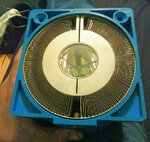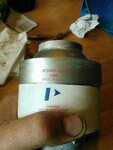twenglish1
Junior Member level 1
Someone brought this bulb in to the junk yard, a friend of mine works at, so he bought and gave it to me cause he knew i would find interest in it, after disassembling it i found a part number which lead me to the specs, 2400 watts and 73,000 lumens!! Now i will need to find a way to power it, datasheet says roughly 100 amps at 24vdc, and of course being an arc lamp it will require a high voltage pulse ignition circuit, my first thought is a tig welder might be a simple way to power it as most have a high voltage arc starter

